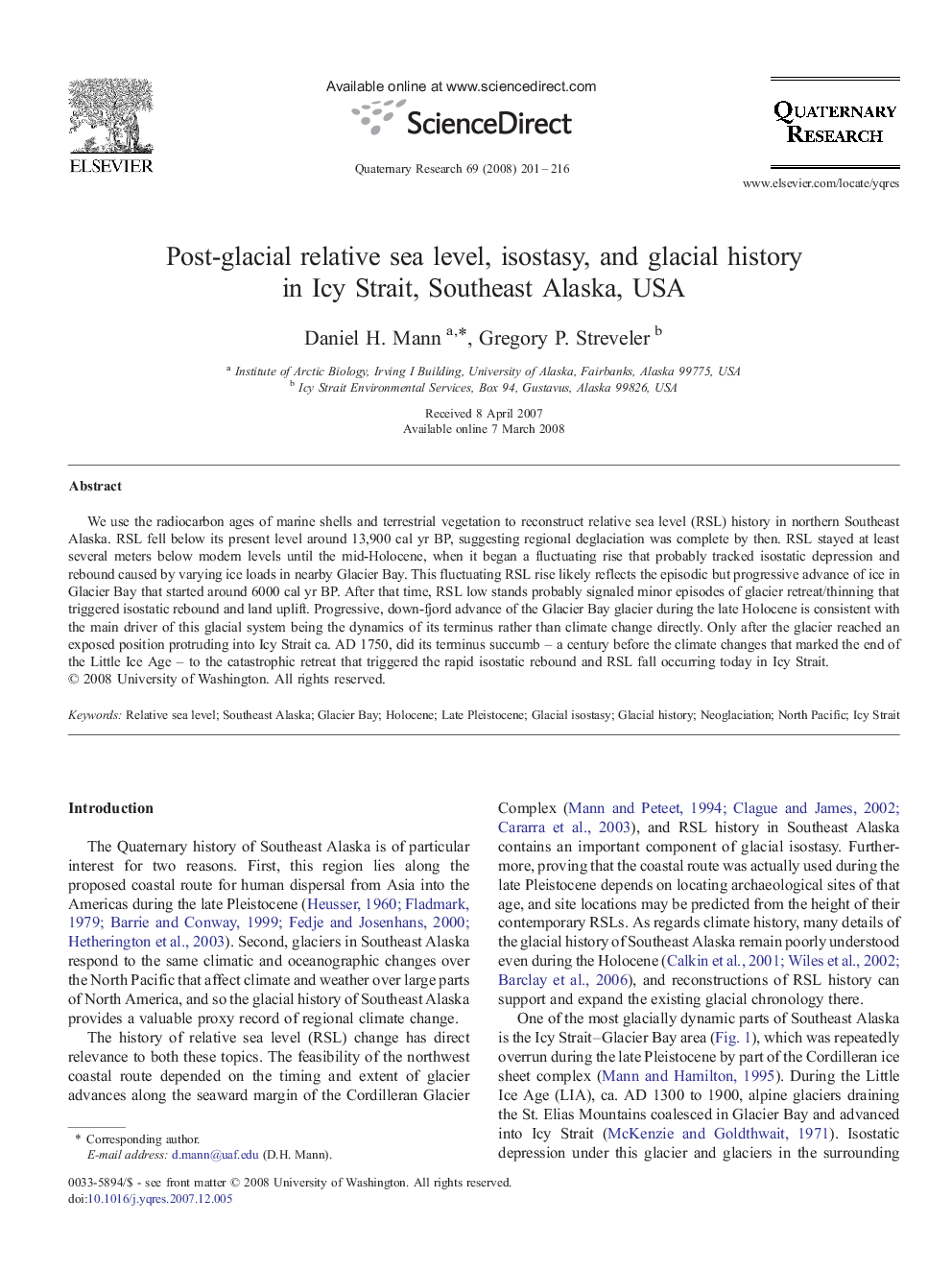| کد مقاله | کد نشریه | سال انتشار | مقاله انگلیسی | نسخه تمام متن |
|---|---|---|---|---|
| 1046019 | 944852 | 2008 | 16 صفحه PDF | دانلود رایگان |

We use the radiocarbon ages of marine shells and terrestrial vegetation to reconstruct relative sea level (RSL) history in northern Southeast Alaska. RSL fell below its present level around 13,900 cal yr BP, suggesting regional deglaciation was complete by then. RSL stayed at least several meters below modern levels until the mid-Holocene, when it began a fluctuating rise that probably tracked isostatic depression and rebound caused by varying ice loads in nearby Glacier Bay. This fluctuating RSL rise likely reflects the episodic but progressive advance of ice in Glacier Bay that started around 6000 cal yr BP. After that time, RSL low stands probably signaled minor episodes of glacier retreat/thinning that triggered isostatic rebound and land uplift. Progressive, down-fjord advance of the Glacier Bay glacier during the late Holocene is consistent with the main driver of this glacial system being the dynamics of its terminus rather than climate change directly. Only after the glacier reached an exposed position protruding into Icy Strait ca. AD 1750, did its terminus succumb – a century before the climate changes that marked the end of the Little Ice Age – to the catastrophic retreat that triggered the rapid isostatic rebound and RSL fall occurring today in Icy Strait.
Journal: Quaternary Research - Volume 69, Issue 2, March 2008, Pages 201–216